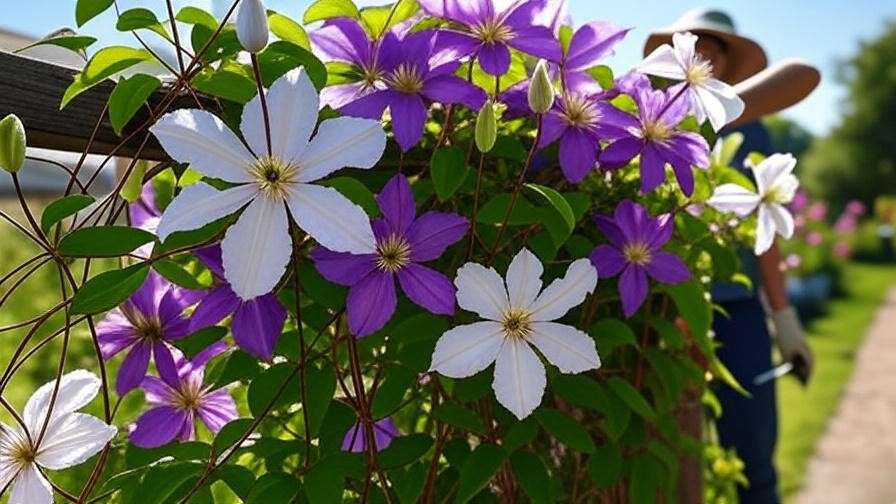Imagine transforming your garden into a cascade of vibrant, bell-shaped blooms with minimal effort. Alpine clematis plants are the secret weapon for gardeners seeking stunning, low-maintenance climbers that thrive in diverse conditions. These charming perennials, with their early spring flowers and lush foliage, are perfect for beginners and seasoned horticulturists alike. Whether you’re dressing up a trellis or adding charm to a small patio, alpine clematis delivers. In this comprehensive guide, we’ll share expert tips, practical care techniques, and troubleshooting advice to help you grow thriving alpine clematis plants. Drawing on decades of gardening experience and insights from horticultural experts, this article will empower you to create a breathtaking garden display. Let’s dive in! 🌼
What Are Alpine Clematis Plants? 🌼
Origins and Characteristics
Alpine clematis (Clematis alpina), native to the mountainous regions of Europe, is a hardy, deciduous or semi-evergreen climber known for its delicate, bell-shaped flowers. Blooming in early spring, these plants produce nodding flowers in shades of blue, purple, pink, or white, followed by fluffy seed heads that add visual interest into fall. Popular varieties like ‘Pamela Jackman’ (deep blue) and ‘Frances Rivis’ (soft lavender) offer diverse color options. Unlike larger clematis hybrids, alpine clematis plants grow to a manageable 6-8 feet, making them ideal for small gardens, containers, or vertical accents. Their compact size and resilience make them a favorite among gardeners seeking elegance without fuss.
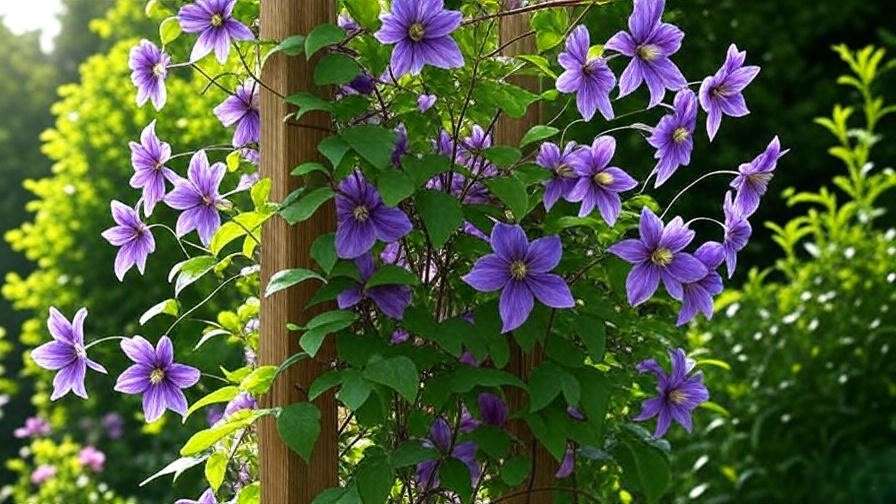
Benefits of Growing Alpine Clematis
Why choose alpine clematis? These plants are low-maintenance compared to other clematis varieties, requiring minimal pruning and care. They’re cold-hardy, thriving in USDA zones 4-7, and adapt to various climates, from chilly northern winters to temperate regions. Alpine clematis plants attract pollinators like bees and butterflies 🐝, supporting local ecosystems. Their climbing habit adds vertical interest to landscapes, transforming bare fences or arbors into stunning focal points. Whether you’re a novice gardener or a seasoned pro, these plants offer beauty and versatility with minimal effort.
Choosing the Perfect Spot for Your Alpine Clematis 🌞
Sunlight and Shade Requirements
To ensure your alpine clematis plants thrive, choose a location with 4-6 hours of sunlight daily, ideally with morning sun and afternoon shade. This balance promotes vibrant blooms while protecting delicate foliage from scorching in hot climates. In warmer regions, avoid full sun exposure, as it can stress the plant. A common mistake is planting in deep shade, which reduces flowering. Observe your garden’s light patterns and select a spot where the plant’s roots stay cool (more on that later) while the vines bask in sunlight.
Soil and Drainage Needs
Alpine clematis plants prefer well-draining, loamy soil with a neutral to slightly alkaline pH (6.5-7.5). Test your soil using a pH kit from a garden center, and amend clay-heavy or sandy soils with compost or organic matter to improve drainage and fertility. Poor drainage can lead to root rot, a common issue for clematis. To enhance drainage, consider raised beds or planting on a slight slope. Adding a layer of mulch around the base retains moisture and keeps roots cool, a key factor for healthy growth.
Space and Support Structures
These climbers need room to shine. Plant alpine clematis near a trellis, fence, pergola, or obelisk to support their twining vines. For small spaces, they thrive in containers with a sturdy trellis or bamboo stakes 🪴. Space plants 3-4 feet apart to prevent overcrowding and ensure good air circulation. In urban gardens, a 12-18 inch deep container works well, provided it has drainage holes. Plan for vertical growth, as these plants can reach 6-8 feet in height, creating a lush, cascading effect.
Planting Alpine Clematis: Step-by-Step Guide 🌱
When and How to Plant
The best time to plant alpine clematis is early spring or fall, allowing roots to establish before extreme weather. Follow these steps for success:
- Prepare the Hole: Dig a hole twice as wide and slightly deeper than the root ball.
- Amend the Soil: Mix compost or well-rotted manure into the soil to boost nutrients.
- Plant Deep: Place the plant 2-3 inches deeper than it was in the pot to encourage strong root growth.
- Backfill and Water: Fill the hole, firm the soil gently, and water thoroughly.
- Add Support: Install a trellis or stake immediately to guide young vines.
Expert Tip: Mulch around the base with bark or straw to keep roots cool and moist.

Selecting Healthy Plants
When buying alpine clematis, choose plants with firm, green stems and no signs of wilting or yellowing. Check for healthy roots (white and fibrous, not brown or mushy). Reputable local nurseries or online suppliers like Plant Delights Nursery or Bloms Bulbs ensure quality stock. Avoid plants with sparse foliage or signs of pests, as these may struggle to establish. If purchasing online, read reviews and confirm the supplier’s reputation for healthy plants.
Essential Care Tips for Thriving Alpine Clematis 🌿
Watering Best Practices
Water alpine clematis plants deeply but infrequently, aiming for about 1 inch of water per week during the growing season. Newly planted clematis need more frequent watering (every 3-4 days) until established. In hot, dry weather, increase watering, but ensure the soil drains well to avoid waterlogging. Signs of overwatering include yellowing leaves and soggy soil, while underwatered plants may have drooping or crispy foliage. Adjust based on rainfall and season, reducing water in winter when the plant is dormant.
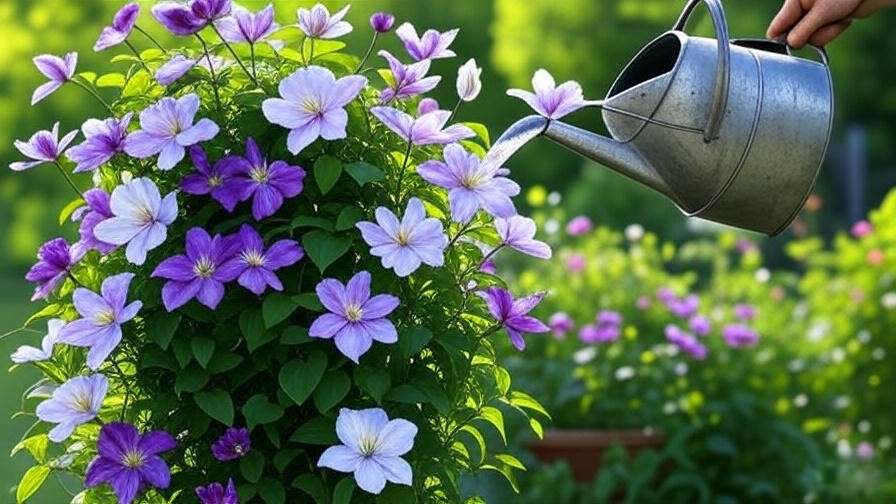
Fertilizing for Vibrant Blooms
Fertilize alpine clematis in early spring with a balanced, slow-release fertilizer (e.g., 10-10-10) to promote healthy growth and blooms. Apply again in mid-summer to support continued flowering. Organic options like compost tea or fish emulsion work well for eco-conscious gardeners 🌍. Avoid over-fertilizing, as excess nitrogen can lead to lush foliage at the expense of flowers. Spread fertilizer around the base, keeping it 6 inches from the stem to prevent burn, and water thoroughly after application.
Pruning Alpine Clematis Like a Pro ✂️
Alpine clematis belongs to Pruning Group 1, meaning it blooms on old wood and requires minimal pruning. After flowering (typically late spring), lightly trim to remove dead or damaged growth and maintain shape. Use clean, sharp shears to cut just above a healthy bud. Avoid heavy pruning, as this can reduce next year’s blooms. A common mistake is pruning too early or too aggressively—stick to light tidying for best results. If the plant becomes overgrown, a gentle reshape every few years keeps it tidy.

Troubleshooting Common Alpine Clematis Problems 🐛
Pests and Diseases
While alpine clematis plants are generally resilient, they can face a few pests and diseases. Common culprits include:
- Aphids: These tiny insects cluster on new growth, sucking sap and causing leaves to curl. Control them with a strong water spray or insecticidal soap.
- Spider Mites: Look for webbing and stippled leaves. Increase humidity and use neem oil for organic management.
- Slugs and Snails: These pests chew holes in leaves, especially in damp conditions 🐌. Use slug traps or diatomaceous earth to deter them.
Fungal issues like powdery mildew (white coating on leaves) and clematis wilt (sudden stem collapse) can occur. Prevent mildew by ensuring good air circulation and avoiding overhead watering. For wilt, remove affected stems immediately and apply a fungicide if necessary. Regular monitoring and early intervention keep your plants healthy. Expert Insight: The Royal Horticultural Society recommends sterilizing pruning tools to prevent disease spread.
Environmental Challenges
If your alpine clematis isn’t blooming, consider these factors:
- Too Much Shade: Insufficient sunlight reduces flower production. Relocate or prune nearby plants to increase light exposure.
- Improper Pruning: Cutting too much old wood can eliminate next season’s buds. Stick to light pruning after flowering.
- Nutrient Imbalance: Over-fertilizing with nitrogen-heavy products leads to leafy growth but fewer blooms. Switch to a balanced fertilizer.
Yellowing leaves may indicate overwatering, poor drainage, or nutrient deficiency. Test soil pH and drainage, and adjust care accordingly. In colder climates, protect plants from frost by mulching heavily around the base or wrapping containers in burlap during winter. For heatwaves, provide extra shade and water to prevent stress.
Designing Your Garden with Alpine Clematis 🌺
Companion Plants for Stunning Displays
Alpine clematis plants shine when paired with complementary plants. Consider these companions:
- Roses: Combine with climbing or shrub roses for a romantic, layered look.
- Lavender: Its purple blooms echo clematis colors and attract pollinators 🐝.
- Ornamental Grasses: Grasses like Miscanthus add texture and contrast.
Avoid aggressive plants like mint or ivy, which compete for nutrients and space. For a cohesive design, choose plants with similar sunlight and soil needs. For example, a garden bed with alpine clematis, lavender, and dwarf conifers creates a low-maintenance, pollinator-friendly display.
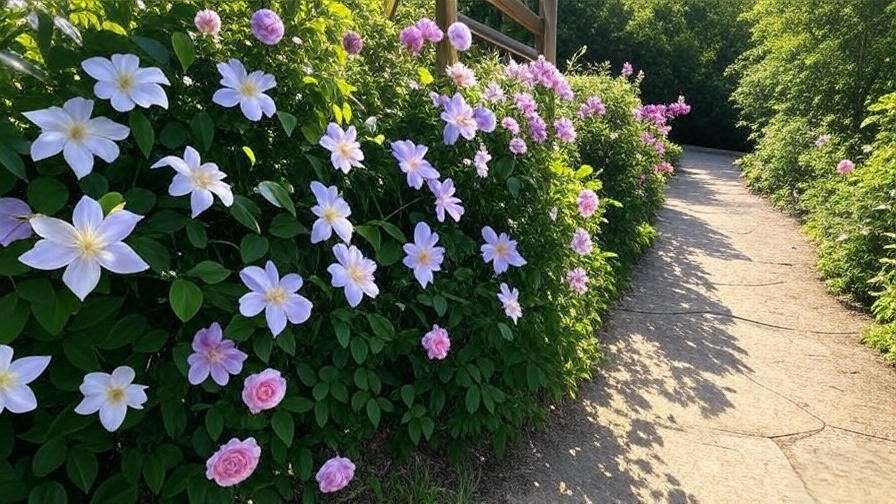
Creative Uses in Landscaping
Alpine clematis is incredibly versatile. Use it to:
- Cover Vertical Structures: Train vines over arbors, pergolas, or fences for a lush, green curtain.
- Enhance Containers: Grow in large pots on patios or balconies with a small trellis for urban gardens 🪴.
- Create Ground Cover: Let vines trail along low walls or rock gardens for a cascading effect.
Inspiration: A gardener in Oregon transformed a plain wooden fence into a vibrant display by training ‘Frances Rivis’ clematis alongside climbing roses, creating a colorful backdrop visible from her patio. Experiment with creative placements to maximize your garden’s visual impact.
Expert Insights: Secrets to Long-Term Success 🌟
Horticulturists emphasize consistency for thriving alpine clematis. Here are lesser-known tips:
- Mulching Matters: Apply a 2-3 inch layer of organic mulch (e.g., bark or straw) to regulate soil temperature and retain moisture. Refresh annually.
- Deadheading for Repeat Blooms: Remove spent flowers to encourage a second flush of blooms in late summer.
- Root Protection: Plant low-growing perennials like hostas around the base to shade roots, mimicking alpine clematis’ natural mountain habitat.
Case Study: A gardener in Vermont struggled with sparse blooms on her alpine clematis until she adjusted the soil pH to 7.0 and added a trellis for better support. Within two seasons, her ‘Pamela Jackman’ produced abundant flowers, proving the value of tailored care.
FAQs About Alpine Clematis Plants ❓
Q1: How fast do alpine clematis plants grow?
A: Alpine clematis grows moderately, reaching 6-8 feet in 2-3 years under ideal conditions. Growth slows in poor soil or shade.
Q2: Can alpine clematis grow in pots?
A: Yes! Use a 12-18 inch deep container with drainage holes and a sturdy trellis. Ensure well-draining soil and regular watering.
Q3: Why isn’t my clematis blooming?
A: Common causes include too much shade, improper pruning, or nutrient imbalance. Ensure 4-6 hours of sun, light pruning after flowering, and balanced fertilizer.
Q4: Are alpine clematis plants deer-resistant?
A: Generally, yes. Deer tend to avoid clematis due to its slightly bitter foliage, but hungry deer may nibble in sparse seasons.
Q5: How do I overwinter alpine clematis in colder climates?
A: Mulch heavily around the base (4-6 inches) and wrap containers in burlap. In USDA zones below 4, consider insulating with straw or fleece.
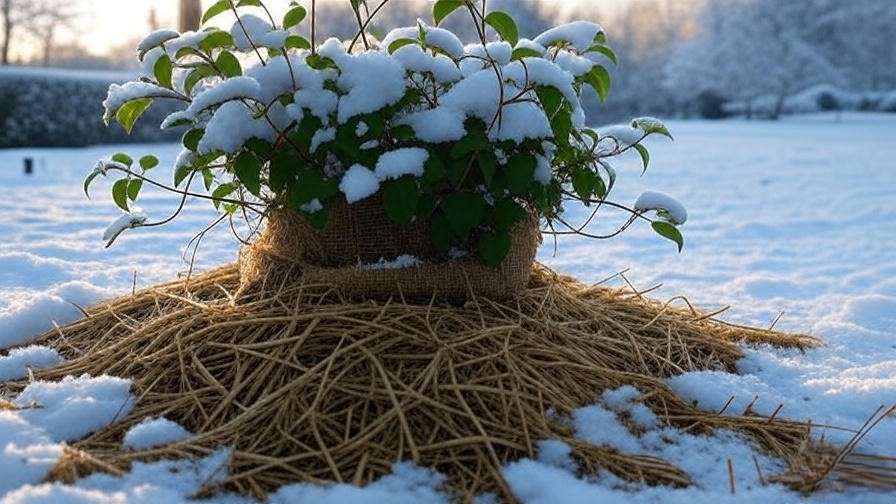
Conclusion: Grow Your Dream Garden with Alpine Clematis 🌼
Alpine clematis plants are a gardener’s delight, offering vibrant blooms, easy care, and endless versatility. From their early spring flowers to their pollinator-friendly nature, these climbers elevate any landscape. By choosing the right location, mastering care techniques, and troubleshooting issues, you can enjoy years of stunning displays. Start planting today to transform your garden into a blooming masterpiece! Share your clematis journey in the comments or explore our related articles on climbing plants and garden design for more inspiration. 🌸

